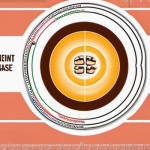糖尿病是一种常见的慢性代谢性疾病,随着生活方式的改变和饮食结构的调整,其发病率在我国逐年上升。有效的 diabetes prevention and treatment strategy involves lifestyle changes such as regular exercise, maintaining a healthy weight, and adopting a balanced diet. Today, let’s talk about the role of reduced-fat and low-sodium diets in our efforts to fight diabetes.
Reduced-fat diet stands for “reducing the intake of high-fat foods,” which is extremely important for people with diabetes. This is because excessive fat can lead to elevated blood lipid levels, hypertension, cardiovascular disease, and other complications associated with diabetes. Therefore, incorporating a low-fat diet into our daily life has become an essential measure in diabetes prevention.
What does “adding meals” mean? Adding meals refers to dividing the daily dietary intake into several small portions, which can help maintain stable blood sugar levels and improve insulin sensitivity. Specifically, the following points should be paid attention to:
1. Properly choose ingredients. It is recommended to consume 1-2 servings of vegetables at each meal, which can provide a rich supply of fiber and nutrients. Additionally, choosing low-glycemic index foods, such as oats, barley, beans, and sweet potatoes, can help reduce blood sugar fluctuations.
2. Adequately distribute protein intake. Lean meat, fish, poultry, eggs, and dairy products are all good sources of protein. Each meal should include about 25-30 grams of high-quality protein to maintain muscle mass and improve insulin sensitivity.
3. Reduce the proportion of carbohydrates. Carbohydrates should be ingested in appropriate quantities at each meal to prevent blood sugar spikes. The recommended intake is around 45-60 grams, which corresponds to 5-8 tablespoons of cooked rice or bread. It is important to choose whole grains over refined carbohydrates.
4. Pay attention to the addition of healthy fats. Healthy fats can provide energy and protect the cardiovascular system. Choose foods such as nuts, seeds, olive oil, and fatty fish when adding healthy fats to your diet. Each meal should contain 2-3 level spoonfuls of healthy fats, avoiding excessive intake.
5. Keep an eye on sodium intake. High sodium intake can increase blood pressure, which is a common complication in the diabetic population. It is recommended to reduce daily salt intake to less than 6 grams, equivalent to about one teaspoon.
Reduced-sodium diet also plays a crucial role in diabetes prevention. Excessive salt intake can cause water retention and increased blood viscosity, increasing the risk of cardiovascular disease. Therefore, it is essential to pay attention to the following aspects:
1. Use less processed foods. Processed foods often contain excess sodium, so reduce their consumption in our daily life.
2. Cook with more herbs and spices than salt. Spices such as garlic, ginger, pepper, and cumin are rich in flavor and can enhance food taste without adding too much salt.
3. Choose fresh ingredients instead of canned or preserved products. Canned and preserved foods usually contain a higher amount of preservatives and additives that are high in sodium.
4. Read labels carefully when buying processed foods. Choose options with lower sodium content to meet dietary requirements.
5. Boil the noodles properly to remove excessive sodium before cooking, especially for packaged noodles or instant products.
In today’s increasingly busy society, we often neglect the importance of a healthy diet, which may lead to the occurrence and development of diabetes. Therefore, in order to achieve long-term diabetes prevention and control goals, it is necessary to actively implement a low-fat, low-sodium way of eating into our lives. Here’s a specific meal plan you can refer to: [Insert Diabetes Prevention Good Helper].
This meal plan not only provides detailed cooking methods for various types of foods, but also gives practical dietary recommendations. For people with diabetes, adhering to this diet can help maintain blood sugar levels within the normal range, effectively prevent complications, and enhance overall health.
In summary, a healthy diet is an essential part of diabetes prevention and treatment. By adopting a low-fat and low-sodium approach to eating, we can improve our own health and well-being while also influencing family members and friends to live healthier lives. Let’s work together to create a prosperous, healthy future for ourselves and our loved ones!


